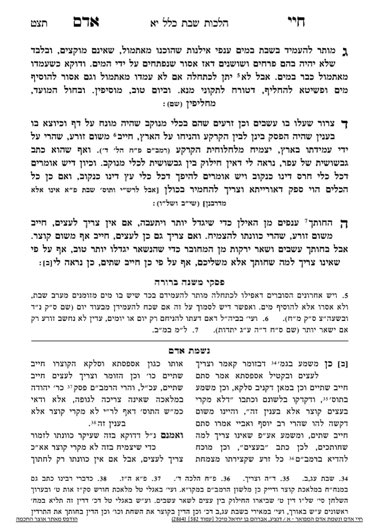Sponsorships for the upcoming Klalim, which discuss the 39 melachos of Shabbos, are available. Please contact Rabbi Reingold for more information at rabbireingold@gmail.com or 301.996.5910
We are beginning siman 4. The Chayei Adam discusses a concept already known to Chazal that it is possible for a plant to absorb nutrients from the ground even though the plant has no direct contact with the ground. The plant absorbs nutrients through the air. This means that moving such a plant from the ground would be a form of kotzair (removing the plant from its source), and placing such a plant on the ground would be a form of zoreiah.
Chazal give us two examples of this concept. The first is moss which grows on top of a movable rock. The second is a plant within a flowerpot. Chazal differentiate between different types of flowerpot materials, as certain materials are considered porous and the absorption occurs through the material of the flowerpot itself. It makes no difference whether there are holes at the bottom of the pot, since the material itself is porous.
Other materials are considered non-porous, so if there are no holes at the bottom of the pot, there is no absorption from the ground. If there is a hole, it is possible for the pot to absorb nutrients from the ground even though the plant is not actually touching the ground, due to the thickness of the pot floor.
Thus, the Chayei Adam writes that a rock or pot which has a hole at the bottom but has an additional barrier between the bottom of the pot and the ground is not absorbing nutrients from the ground. Therefore, one who takes the pot or rock and places it on the ground is chayav for zoreiah, since transferring it to the ground allows the plant to grow. The Chayei Adam points out that the Rambam concurs (perek 8). The Rambam uses the example of a clod of earth, without the clod being in a pot or container. Nevertheless, the Chayei Adam writes that the Rambam’s example is analogous to the concept he is discussing over here.
The Chayei Adam continues, and writes that some argue and hold that this halacha is not limited to a container with a hole, but applies to other containers as well. We will clarify this point in the upcoming shiur, be’ezras Hashem.
Summary
- It is possible for a plant to absorb nutrients from the ground without directly touching the ground. Therefore, moving a plant which was already absorbing nutrients in such a manner is kotzair, and placing a plant to absorb nutrients in such a manner is zoreiah.



